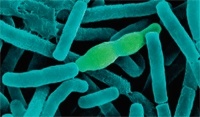
The so-called sonotweezers are being developed by a collaborative research team comprising partners from Bristol, Dundee, Southampton and Glasgow universities.
The team believes that its technology could have a variety of applications beyond homeland security and foresee it being used in everything from tissue engineering to stem-cell research.
In 2009 the group received a four-year EPSRC grant worth £4m to complete its research by 2013.
Team leader Bruce Drinkwater, professor of ultrasonics in the Department of Mechanical Engineering at Bristol, said their sonotweezers would be based on a silicon chip. Integrated within a cavity of this chip would be an array of piezoelectric transducers.
Drinkwater added that electronics would also be integrated on the chip to excite the transducers with varying voltage levels, phase and pulse shape.
The ability to differentiate cells by ultrasonic force has potential applications in stem-cell research
When a small sample such as a powdery anthrax mix is placed inside the chip cavity, the transducers would generate an ultrasonic force field onto the sample. Drinkwater explained that security officials would be able to detect anthrax from innocuous powders in the mix through differences in compressibility and density.
‘The different compressibility of powder relative to the cell means the force is different so you are able to differentiate them,’ he said.
The ability to differentiate cells by ultrasonic force has potential applications in stem-cell research. Drinkwater added that stem-cell researchers currently need an effective method to separate and classify stem cells that will go on to form different parts of the body such as skin or lungs.
‘There is a big demand to be able to separate those at the earliest stage possible,’ he said. ‘At the moment we don’t know if the ultrasonic force on different types of cells will be different but if it is, we can separate them and that would be a hugely important application because at the moment it is almost impossible to distinguish different types of stem cells.’
With tissue engineering, the ultrasonic forces exerted by the transducers would be used to move groups of cells — ranging from micron to millimetre size — to build up artificial tissue. These tissues could be used for testing the effects of new drugs.




Red Bull makes hydrogen fuel cell play with AVL
Formula 1 is an anachronistic anomaly where its only cutting edge is in engine development. The rules prohibit any real innovation and there would be...